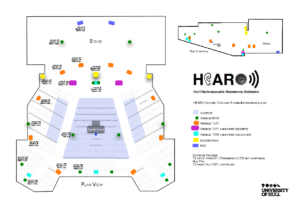 I am excited to be at University of Hull, UK for the Sound + Environment 2017 conference taking place from 29 June to 2 July. It brings together “artists and scientists to examine the ways that sound can deepen our understanding of environments.” On Saturday, 1 July it is my privilege and honor to premiere a new work titled The Frequent Listener.
I am excited to be at University of Hull, UK for the Sound + Environment 2017 conference taking place from 29 June to 2 July. It brings together “artists and scientists to examine the ways that sound can deepen our understanding of environments.” On Saturday, 1 July it is my privilege and honor to premiere a new work titled The Frequent Listener.
I look forward to meeting many World Forum for Acoustic Ecology (WFAE) members at the conference, and its two internationally renowned keynote speakers, Chris Watson and Leah Barclay.

The Frequent Listener is created for and performed with the HEARO (Hull Electroacoustic Resonance Orchestra), a 30-loudspeaker “orchestra” in the University of Hull’s newly refurbished concert venue and cinema space. This orchestra offers a high-quality sound playback system for immersive multi-channel presentation, including ambisonics.
The Frequent Listener is performance collaboration with two local players using handheld transducers, piano, and fixed media audio. One of its aims is to engage audience in an experience of the HEARO loudspeaker orchestra as a particular sound making and listening process. The ability to amplify materials with contact microphones and coils are key to mapping the haptic and motoric of each player’s body into acoustic space, while producing a diverse range of unusual sounds through the physical gestures and manipulations of its player. Projecting the typically inaudible vibrations of solid objects into space, as well as reversing this outward flow of vibration back into the transducers drives the resonating materials — the piano’s tensioned strings and soundboard — in a way similar to David Tudor’s Rain Forest and my own Springboard. In this projection bodies acoustically couple with the concert space, this forms the ecological relationship made both tactile and audible for the players and audience. However, the slippage in this tidy binary occurs through the presence and potential interference of pre-recorded audio behaving as a third player who may or may not listen.